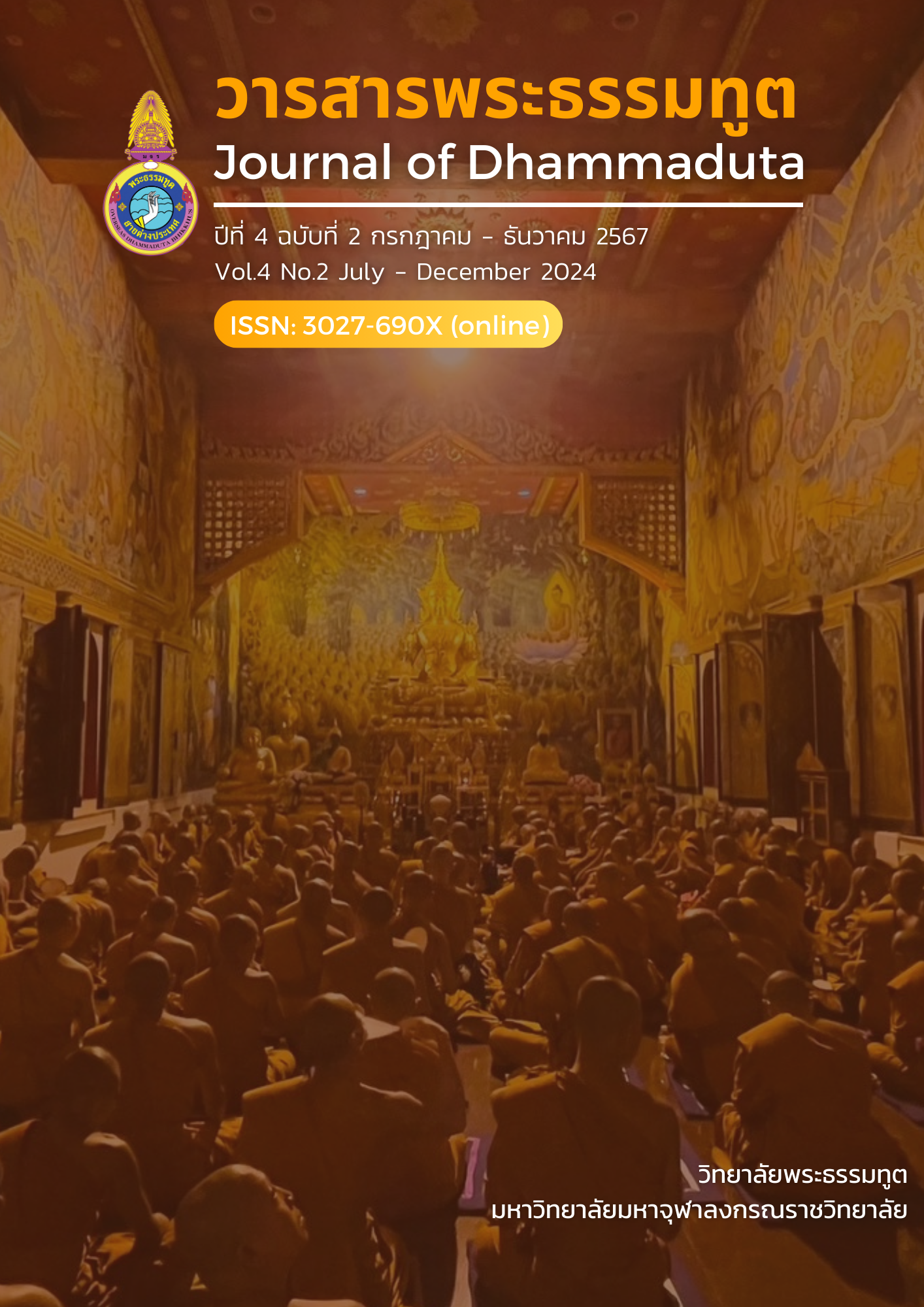An Anāgāmi : One who does not patisandhi in another bhūmi
Keywords:
Suddhāvāsa, Anāgāmi, BhūmiAbstract
Suddhāvāsa is a place where it is generally believed that the patisandhi-citta (rebirth- consciousness) of an anāgāmi will be born in various levels of conception according to the faculties, such as avihā, atappā etc. if they have not yet achieved special qualities, arahattamagga-citta and arahattaphala-citta can occur in pavattikāla (between birth to death period). However, it was found that there are different interpretations of the place where anãgãmi will be born, such as those who can be born in suddhãvãsa must be anãgãmi who has achieved the fifth jhāna, other than that, they will be born according to the jhāna they have achieved. If they are sukkhavipassaka anāgāmi, after they die, they will be born in vehapphalā realm, etc.
Therefore, the author aims to study the place where anāgāmi will be born after the cuti-citta has occurred by searching for information from evidence appearing in The Pali Canon, atthakathā, scriptures related to Buddhism, as well as information from various places to find a conclusion on this matter.
References
มหาจุฬาลงกรณราชวิทยาลัย. (2539). พระสุตตันตปิฏก. กรุงเทพมหานคร: โรงพิมพ์ มหาจุฬาลงกรณราชวิทยาลัย.
มหาจุฬาลงกรณราชวิทยาลัย. (2539). พระอภิธรรมปิฎก. กรุงเทพมหานคร: โรง พิมพ์มหา จุฬาลงกรณราชวิทยาลัย.
มหาจุฬาลงกรณราชวิทยาลัย.(2560). อรรถกถาภาษาไทย พระสุตตันตปิฎก. กรุงเทพมหานคร: โรงพิมพ์มหาจุฬาลงกรณราชวิทยาลัย.
มหาจุฬาลงกรณราชวิทยาลัย. (2560). อรรถกถาภาษาไทย พระอภิธรรมปิฎก. กรุงเทพมหานคร: โรงพิมพ์มหาจุฬาลงกรณราชวิทยาลัย.
พระพรหมคุณาภรณ์ (ป.อ.ปยุตฺโต). (2556). พจนานุกรมพุทธศาสตร์ ฉบับประมวลธรรม. พิมพ์ครั้งที่ 24:โรงพิมพ์พระพุทธศาสนาของธรรมสภา. น.81.
พระพรหมคุณาภรณ์ (ป.อ. ปยุตฺโต). (2563). พจนานุกรมพุทธศาสน์ ฉบับประมวลศัพท์. พิมพ์ครั้งที่ 15. สหธรรมิก:กรุงเทพฯ น.403.
พระสัทธัมมโชติกะ ธัมมาจริยะ. (2565). ปรมัตถโชติกะ มหาอภิธัมมัตถสังคหฏีกา วิถีมุตตสังคหะ ภูมิจตุกกะและปฏิสนธิจตุกกะ ปริจเฉท 5 เล่ม 1 (หลักสูตรชั้นมัชฌิมอาภิธรรมิกตรี). พิมพ์ครั้งที่ 10. มูลนิธิสัทธัมมโชติกะ มหาวิทยาลัยมหาจุฬาลงกรณราชวิทยาลัย. น.150, 251-252
เลดีสยาดอ. พระคันธสาราภิวงศ์ (แปล). (2555). อภิธัมมัตถสังคหะและปรมัตถทีปนี. พิมพ์ครั้งที่ 4. ประยูรส์นไทย:กรุงเทพฯ น.582.
มูลนิธิภูมิพโลภิกขุ.(2565). อภิธัมมัตถสังคหบาลีและอภิธัมมัตถวิภาวินีฏีกา ภาค 2. พิมพ์ครั้งที่ 3. โรงพิมพ์มูลนิธิภูมิพโลภิกขุ : กรุงเทพฯ. น.39, 95-97
วรรณสิทธิ ไวทยะเสวี. (2559).คู่มือการศึกษาพระอภิธัมมัตถสังคหะ ปริจเฉทที่ 5 วิถีมุตตสังคหวิภาค. พิมพ์ครั้งที่ 8. มูลนิธิแนบมหานีรานนท์ : นครปฐม. น.319.
สิริ เพ็ชรไชย (แปล). (2559). วิสุทธิมัคค์และปรมัตถมัญชุสา ภาค 3. ม.ป.ท. น.1061.
ทองย้อย แสงสินชัย. (30 มิถุนายน 2557). บาลีวันละคำ. สืบค้นเมื่อ 10 มิถุนายน 2567, จากhttps://dhamtara.com/?p=4476
Downloads
Published
How to Cite
Issue
Section
License
Copyright (c) 2025 Journal of Dhammaduta

This work is licensed under a Creative Commons Attribution-NonCommercial-NoDerivatives 4.0 International License.
The Journal of Dhammaduta | ISSN: xxxx-xxxx (online) | Responsible editors: Dr.Phramaha Prayoon Jotivaro. | This journal is published under the terms of the Creative Commons Attribution 4.0 International (CC-BY-NC-ND 4.0) by Dhammaduta College, Mahachulalongkornrajavidyalaya University - 79 Moo 1, Lamsai, Wang Noi, Phra Nakhon Si Ayutthaya 13170 Thailand







